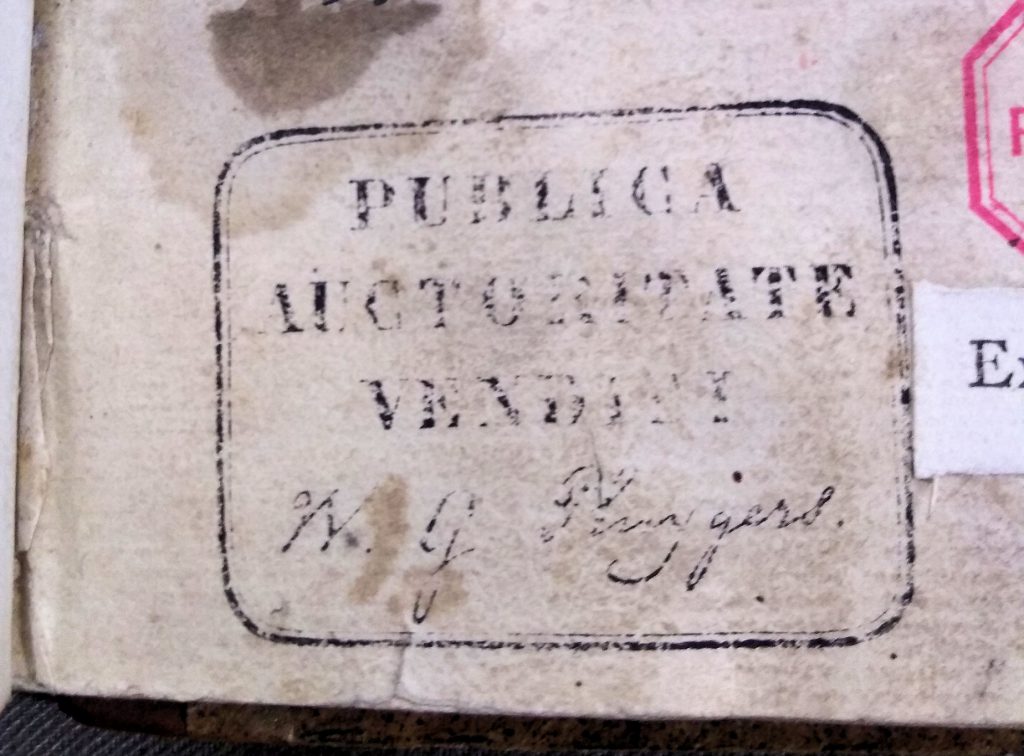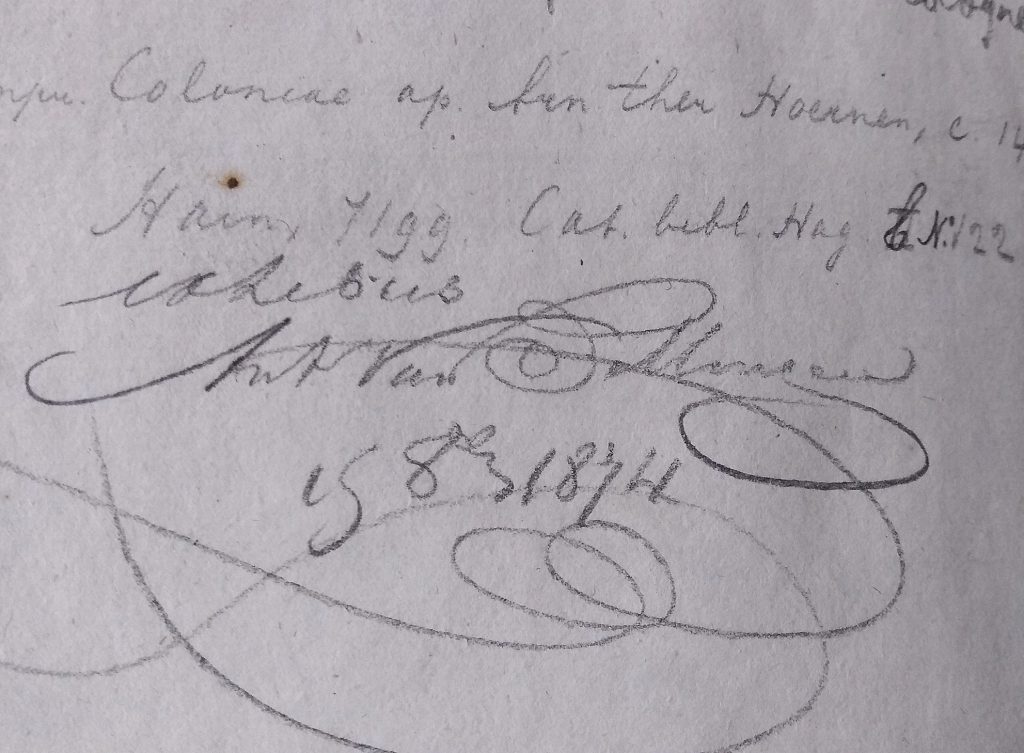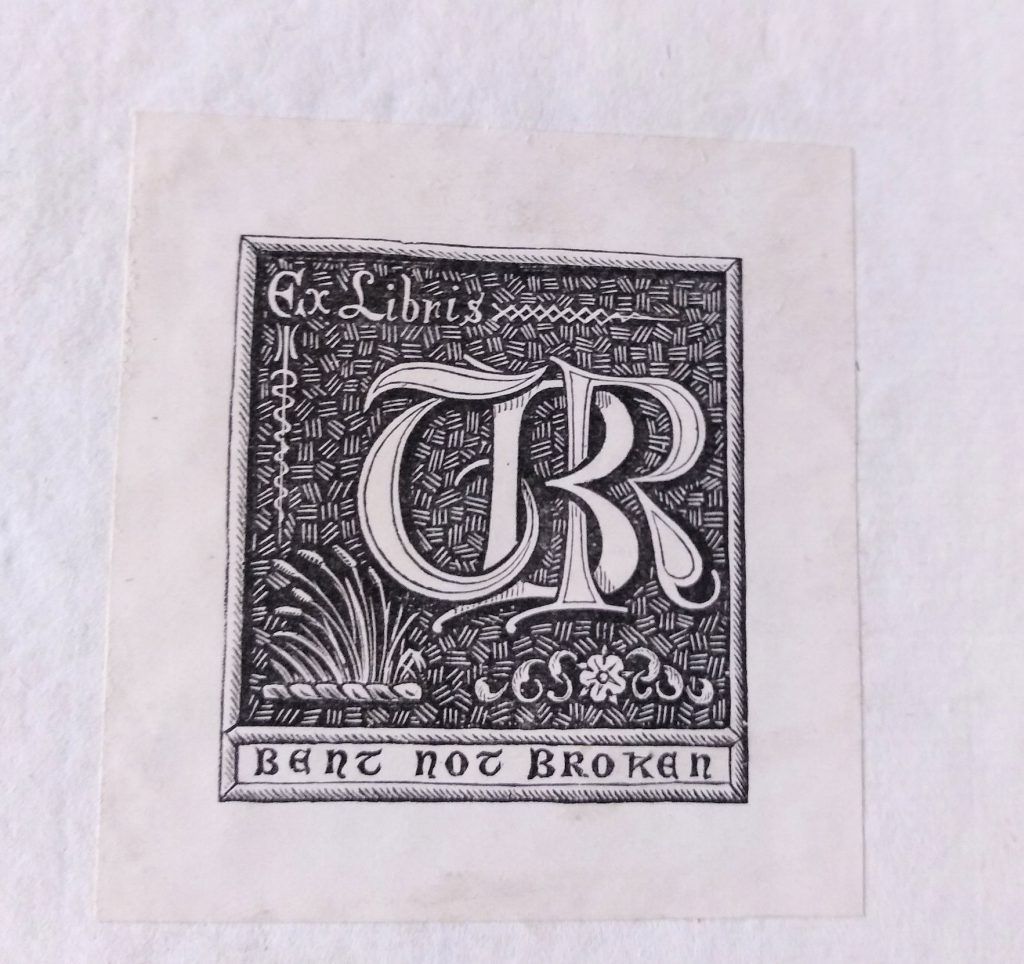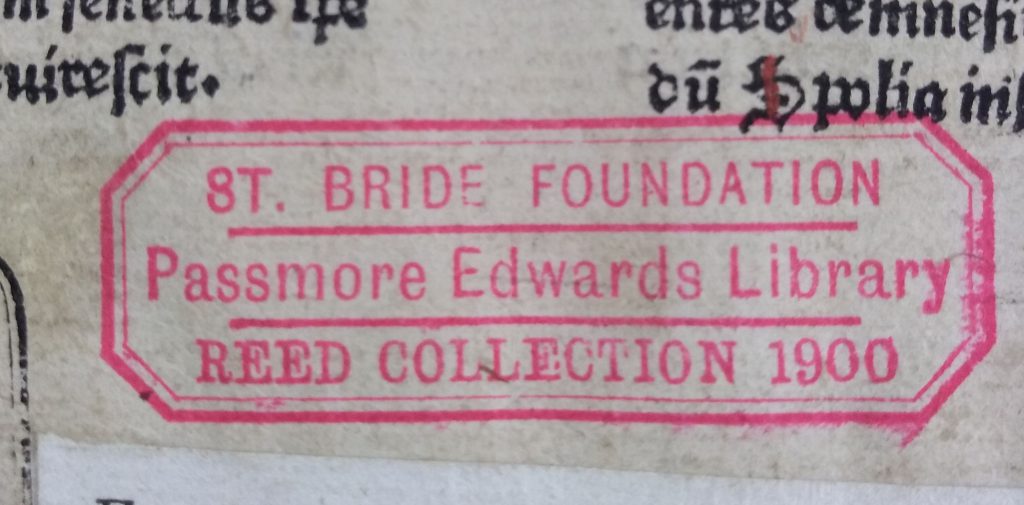Epitomae Rerum Romanarum is a brief history of Rome, with a particular focus on warfare, written by Lucius Annaeus Florus’ (circa 74 – 130 AD), and based on the texts of Livy. It was a valued reference resource on Roman military history right through to the 19th century – a fact evidenced by the long ownership history of this University of Liverpool copy, which is part of an edition thought to have been printed in Cologne, in around 1474, by Arnold Ther Hoernen.
The earliest sign of ownership still present on the book is an inscription at the head of the first printed page:

This note appears to have been written by Jacob Perizonius (1651-1715), as suggested not only by the resemblance to other examples of Perizonius’s handwriting, but also by a second note, on the facing page, which reads: “Notam adscripsit Jac. Perizonius”. Perizonius was a Dutch scholar, a professor of history and classical literature first at Franeker, and then at Leiden. Amongst his most important works are included an important work of historical criticism, and a set of treatise on the Roman republic. He was also a collector of rare books and manuscripts, and he bequeathed his collection, along with a legacy to buy new books, to the University Library at Leiden, where he ended his career.

Chronologically, it would appear that the next attributable mark of ownership comes in the form of a book label on the first printed page, which reads: “Ex bibliotheca Ruhnkeniana”. Like Perizonius, David Ruhnken (1723-1798) was a classical scholar at Leiden. Ruhnken came to Leiden from Wittenberg in 1744 in order to study Greek literature. He flourished at Leiden, eventually rising to the position of University Librarian in 1785.

And indeed, if we return to our previous piece of provenance – the inscription “Notam adscripsit Jac. Perizonius” – I think we can see that it bears a clear resemblance to other examples of Ruhnken’s handwriting. Which throws up a small mystery – Ruhnken came to Leiden after the death of Perizonius, and so after his books had been bequeathed to the University. It is hard to decipher, then, exactly how and when he came to mark the book with what would appear to be his own personal printed label. Further markings in ink – “19 RUH” and “19” – seem to me equally equivocal: there are other books in the Leiden collection which contain similar markings, though they do seem suggestive of personal ownership. If anyone can shed any light on this, please do get in touch!
What is certain is that this book spent time in Leiden University Library. This much is clear from a stamp on first printed page, which reads “Acad. Lugd. Bat. Bibl.” (the Latin place name for Leiden being Lugduni Batavorum); as well as from writing in ink on the text-block edges: “Acad. Lugd”.


A stamp on [the] first printed page, which reads “Publica Auctoritate vendidi W.G. Pluygers”, tells us roughly when the book left the University of Leiden. Willem George Pluygers (1812-1880), another classical scholar, was Librarian at Leiden from 1859-79, so it appears the incunable was sold at some point during this period.

This date range would fit well with our next evidence of ownership. According to an inscription in pencil on the final front endpaper, Antoine Joseph Van Bellingen (1806-1882), of Antwerp, bought the book in 1874. Clearly a prolific collector of incunabula, books previously belonging to Van Bellingen are also recorded at the universities of Glasgow and Oxford, as well as at Princeton and in the Koninklijke Bibliotheek. Arguably, then, with Van Bellingen’s ownership we can mark a transition: from book as working text, to book as collector’s object.

Van Bellingen’s library was sold at auction in Brussels in 1883, and it seems likely that our book was purchased at this sale by Talbot Baines Reed (1852-1893): Reed’s bookmark, with the motto “Bent not broken”, adorns the front pastedown. TBR is perhaps most widely known for his fiction for boys: he was a regular contributor to The Boys Own Paper (many copies of which can be found in the Children’s Literature collection at SCA, incidentally). He was also a printer and typefounder however. TBR’s father, Charles Reed, was a printer, and TBR inherited the family business in 1881. In his short life, TBR became an important authority on typefounding, and this book would have been purchased in pursuit of his studies in type.

After his death, TBR’s typographical collection was purchased by the journalist and philanthropist John Passmore Edwards (1823-1911), who gifted it to the St Bride Library, London in 1900 – at that point a technical library for the printing school and printing trades.

Having travelled from the Low Countries to London, in 1952 this much-owned incunable made its way further north, to Liverpool. A University Library Liverpool bookplate states that it was “The gift of the Sir Sydney Jones Fund” – this being Charles Sydney Jones (1872-1947). A University accession number of 94152, gives an accession date of 31st March 1952, and the accession register states that this item was purchased from Bernard Quaritch, quarter bound in leather, for £46.10-. Three incunables were accessioned on this day, all purchased from Quaritch, and all bearing St Bride’s stamps. The Bodleian Library also records items with St Bride’s provenance purchased from Quaritch at Hodgson’s in March 1952.